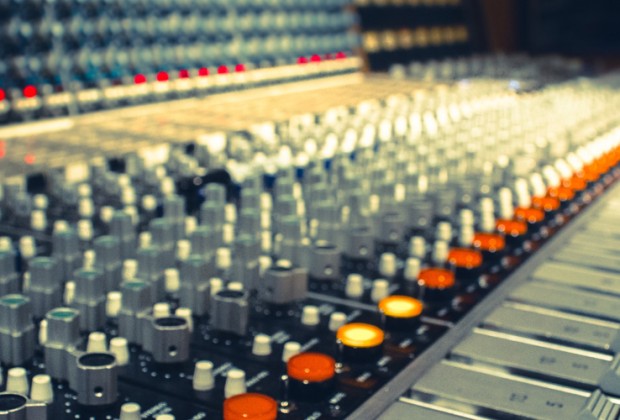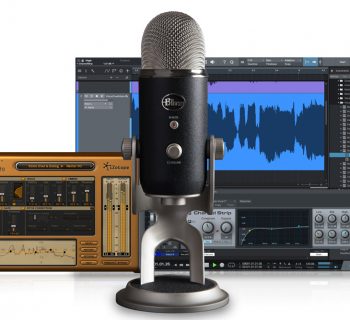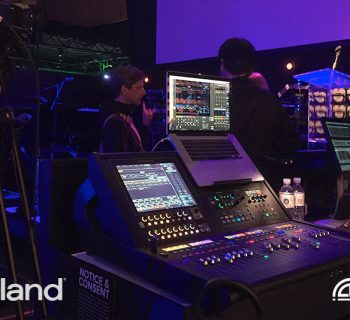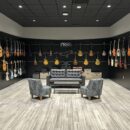You’ve just completed your mix. You spent countless hours refining and re-refining every detail. Now it’s perfect. Or is it?
It sounds incredible when played back on your own listening system with dialed-in monitors specially selected to work optimally in your space. But that doesn’t necessarily mean it will sound just as amazing everywhere else. The reality every mixing engineer faces at some point is that their sound system is not representative of the listening environment the average person uses. So, how do you address this conundrum? Simple. You can listen to your mix through several different systems to get an idea of what it sounds like in any situation, and thus make any necessary adjustments to ensure the best possible sound presentation across all devices.
But, let’s be honest, you can’t possibly check it in every single type of listening system and environment scenario in existence. There are too many different combinations of possibilities being used regularly by music listeners these days for that to be realistic. What you need to do is limit yourself to a reasonable number of representative listening scenarios that will provide a solid foundation upon which to make your decisions regarding the overall viability of your sound across all devices and environments.
So what exactly is the minimum number of systems you should check your mix on to ensure fidelity of sound? To answer this question, you need to think about all the different types of listening systems available and then sort them into a few major categories that cover most common situations. Then as long as you utilize at least one listening system from each one of these major categories you will have achieved sufficient fidelity in believing what you’re hearing.
The reality every mixing engineer faces at some point is that their sound system is not representative of the listening environment the average person uses.
Major Category #1: Home Stereo
The first major category is home stereo systems. While not the staple of every technophile home it once was, it’s still fairly common to find many homes with some form of home-based audio playback system intended for casual listening for individuals or small groups. Today’s home stereo systems are often also now multipurpose systems providing home theater sound to accompany a video screen, and so they are usually set up to complement the video viewing space. Any listening system that would fall within the category of a multipurpose sound system built around a video screen for multiple people to watch and listen will meet this category of sound playback. Particular things to listen for in this category would be: spatially accurate sound fidelity at different locations within the room and reasonable sound reproduction with unusually wide or narrow speaker separation or more than two speakers being used.
Major Category #2: Mobile Devices
The ubiquity of mobile phones and tablets has made this type of listening system an essential part of an engineer’s testing grounds. While most engineers consider mobile devices to provide less than ideal sound reproduction, the technology has improved in recent years with lossless audio formats, improved file storage capacity, and better audio engines built into the devices. It may feel like a far cry from a properly aligned stereo sound system, but no matter how you slice it the reality is that a huge number of people now turn to their mobile phone or tablet computer as their primary device to listen to music and other sound recordings. If you truly want to have a full representation of your mix, you simply must include playback through some type of mobile device, listening at least through ear buds, but also considering sound playback from the device’s built-in speakers as well. Of note to pay attention to in this category are: overly tinny sounds and/or missing bass sounds.
Major Category #3: Vehicle Sound System
This one shouldn’t be a surprise. Doing the final “car check” of your album’s mix before calling it finished has been an integral part of the independent musician’s recording process for decades. The unusual distribution and location of speakers in a car sound system are bound to produce a different type of sound than you would hear in either of the other categories. Some advanced vehicle sound systems have corrective digital signal processing that attempts to adjust the stereo image to optimize it better for the driver, who is going to be located much closer to some of the speakers in the vehicle and farther from others. Also, many car sound systems have smaller speakers located in the front half of the vehicle and larger speakers located in the back half of the vehicle, potentially causing a separation in the bass and treble sounds. When checking your mix in this category, listen for: a reasonable stereo image in multiple seats in the vehicle, not overly boomy sounding in the back of the car or overly crispy sounding in the front of the car.
Once you have noted any corrections you feel you should make to your mix based on what you heard in your example setups for each of these categories, you can now return to your original mixing system and apply changes to the sound that you anticipate will address the needs for each category. So, in essence, (and including your own studio’s listening sysytem) you need 4 total listening systems to achieve solid, reliable sound reproduction for most any situation.
When making your final corrections, it is best to do so with a gentle touch. It is possible some of the adjustments you make that help optimize the sound for one category could potentially deteriorate the sound in another category. By being conservative in your corrections you can avoid this possible pitfall while still helping to improve the sound for multiple playback situations.
ERIK VEACH is the owner and lead audio engineer at Crazy Daisy Productions, providing mixing, mastering, and sound editing services since 2001. He is the original pioneer of automated intelligent mastering systems, introducing them for use in professional music production in 2003.













